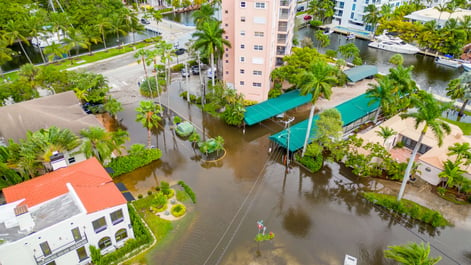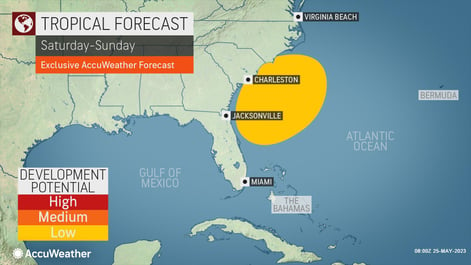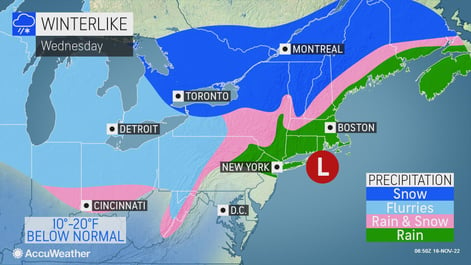Has weather intelligence been added to your team?

Summary
Extreme weather is the new normal. We can help your business win against mother nature.
Key Highlights
Car washes —
Temperature, minutes of sunshine, lack of rain for three days, heavy snow means heavily salted vehicles.
Coffee retailers —
Seasonality, should they sell hot or cold drinks? If October is abnormally cold, more hot pumpkin coffee will sell than iced.
Golf courses —
Temperature, humidity, lack of rain, wind gusts, daylight hours, potential storm threat, etc.
AccuWeather has a single database that holds historical, current and predicted weather data to help optimize your business. This custom data is comprehensive, accurate and quality-controlled and expands in real-time down to the hour. By including a wide range of weather variables, we’ll help you find unique relationships between your sales and weather.
About the database
AccuWeather has designed, installed and perfected a system to collect real-time historical data and to fix missing data. The system also collects and corrects invalid publicly-available data in real time to expand our metric diversity; allowing us to offer an exclusive, complete library of data. Domestic and international data goes back 60+ years, while hourly data contains 70+ weather variables and daily data has 350+ variables. Delivered in a way that works best for you, it seamlessly integrates into any analytics platform.
Variance-capturing metrics help you find previously unknown correlations impacting your sales and operational data, including stronger and more relevant correlations than standard temperature and precipitation. Data can be zip code-specific, allowing you to compare and categorize point of sale, in-store data, labor statistics, and more.
Database variables
- Percentile rankings of maximum & minimum temperatures
- All moisture variables (wet bulb, dew point, and relative humidity)
- Irradiance (direct and diffuse)
- Snow on the ground
- Air quality
- Flood binaries (1, 2.5, 10, 15, & 25-year return frequencies)
- Soil temperature, soil moisture, and growing degree days
- Extreme event binaries (hurricane/thunderstorm, hail, tornado, power outage, earthquake, etc.)
- Evapotranspiration, pan evaporation
- Fire danger rating
Case study
A golf company was able to optimize their operations and make better decisions with unique data provided by the current and historical weather database.
Problem
In the golf industry, poor course performance—including rounds and course revenue—are traditionally blamed on weather and not other business impacts.
Solution
AccuWeather’s business weather experts creatively defined & modeled new metrics to challenge this thinking.

Golf playable day
Days classified as playable. Weather variables such as temperatures, wind speed, precipitation and sunlight were considered.

Golf playable hour
The hour metric dove further into a playable day and considered days with mixed conditions. For example, rain in the morning and sun in the afternoon.

Capacity rounds
Rounds available to be played based upon the weather.

Normal capacity rounds
10, 20 and 30-year rounds available to be played based on normal weather. These rounds were then compared to actual rounds. This determined if the deficit was the weather or other factors, including poor marketing, management or others. As a result, they were able to measure weather impact on equipment sales and rounds played.
Outcome
Defining these new, unique models allowed the golf company to:
- Solve the riddle of weather relevancy (proximity) for 16,000 U.S. golf facilities. They can tell their facilities and equipment manufacturers how many golf playable hours there have been from yesterday to 10 years back.
- Measure weather impact on equipment sales and rounds played.
- Enable the use of weather forecasting for yield management applications in golf.
- Understand the importance of geography, considering areas based on latitude, elevation and maritime influence. For example, there are differences in coastal South Carolina compared to the state’s upland interior.







